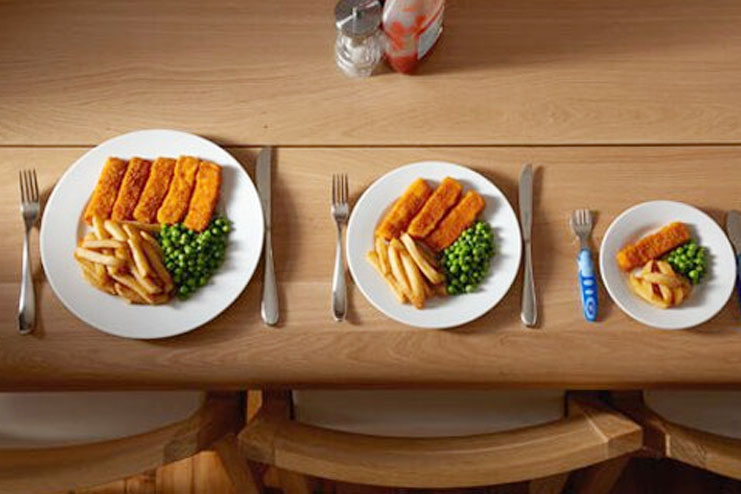Affiliate Disclaimer
Some links in this article are affiliate links. We may earn a small commission if you make a purchase through these links, at no extra cost to you. We only recommend products we find useful to our readersAs a mother you might have felt that the biggest struggle was actually getting your children to learn good habits, and one of habit that especially haunts every mother’s mind is to get them to eat the right kind of food and enough of it. As a mother every woman goes through this and while some women who are doctors or nutritionists know the correct way to go about it, major part of us ladies, do not know what is right or enough for the child.
Is your child eating right? Is your child not eating enough? How can you make sure, that your child eat the right foods? This article will try to answer this and a few related concerns.
Unsurprisingly, there isn’t one universal answer for how to make your child eat. However, there are several tips and tricks which will take you closer and make the experience positive for the entire family. Just follow these simple tips and you will be better educated about your child’s nutrition.
Why You Need to Make Your Child Eat a Balanced Diet
 Childhood is the most formative part of a person’s life. Your child’s eating habits don’t just define how he/she will grow physiologically but also psychologically. In their early years, children’s brains start developing faculties for cognition and learning, movement, language as well as social and emotional intelligence. Whether your child is eating right determines a huge part of this brain development process, which can go ahead and impact the child’s entire life. How your children perform at the school, in the society, and in their careers, largely depends upon the food quality and quantity they consume.
Childhood is the most formative part of a person’s life. Your child’s eating habits don’t just define how he/she will grow physiologically but also psychologically. In their early years, children’s brains start developing faculties for cognition and learning, movement, language as well as social and emotional intelligence. Whether your child is eating right determines a huge part of this brain development process, which can go ahead and impact the child’s entire life. How your children perform at the school, in the society, and in their careers, largely depends upon the food quality and quantity they consume.If you think your child is not eating enough, pay close attention and give it a second thought. Metabolic rates are really high during childhood and even if your child eats a lot, most of the calories get used up in growth and doesn’t show on the child until much later. If on close examination you find out that you were right to suspect it, you will need to revamp your dietary ways at home.
How To Make Your Child Eat?
1. Use a Balanced Diet
 Kids need plenty of carbohydrates, fats, proteins, vitamins, minerals and every kind of nutritional element. However, they are naturally attracted to food that is full of carbs or fatty and fried food. Make it a household habit to cook wholesome meals from the scratch that have as low an element of fried and fatty foods as possible. Introduce more protein instead – proteins speed up metabolism in the right way.
Kids need plenty of carbohydrates, fats, proteins, vitamins, minerals and every kind of nutritional element. However, they are naturally attracted to food that is full of carbs or fatty and fried food. Make it a household habit to cook wholesome meals from the scratch that have as low an element of fried and fatty foods as possible. Introduce more protein instead – proteins speed up metabolism in the right way.2. Don’t Nag
This is a really hard one. How much ever parents decide to be patient with their kids, they cannot resist the temptation of preaching the right ways to do something. “Don’t eat too fast”, “eat more vegetable with every bite of bread”, “you have to finish your food” are way too common in all household with children.
While they are so tempting to use, parent’s nagging has never worked with any child ever. To make your child eat, you need to guide him/her in an engaging manner and then slowly learn and unlearn their habits. Children are often ready to do the right things if you remove the nagging factor out of the game.
3. Portion-control and Meal Frequency
For a child not eating enough, try and introduce more frequent meals with small portions instead of fewer heavier meals. For a child eating enough, encourage consistency in portion-control while bringing in more changes in the food itself.
4. Tiny Bites
Cut the food up in tiny bites so that it becomes controllable for them. Adult-sized food chunks don’t work with kids – tiny things make them feel more exclusive.
5. Watch and Learn
Teach your child to watch and learn while you eat with spoons and forks so that they get engaged in the process of eating and their mind is taken away from the exact contents. Let them see you are chewing slowly and enjoying the taste of every food particle instead of nagging them for eating fast.
6. Appearances Matter in Food
Use colorful decorations in the food. Children are extremely attracted to appearances of food and a seasoning of finely chopped coriander is not only in your child’s best nutritional interests, but is also a visual treat. Make a cute panda from pan cakes, or a nice monster sandwich. Go creative and make your child eat your pieces of art in awe. They will forget all and eat to their hearts content.
7. Slip in Hidden Nutrition
Mix up foods that are difficult for children to consume, in other foods so that they get a meal loaded with nutrients that boosts their immunity and gives them strength. For example, add turmeric to vegetables in a good portion, a couple of tulsi leaves to fruit shakes and smoothies and garlic and ginger to dal. Here is a list of great lunchbox recipes for Indian kids where you can find ample avenues to slip in those essential vegetables.
8. Avoid Sugar
Sugar doesn’t harm kids as much as it does adults, but it does make brain development slower and reinforces a preference for sugar which is hard to get rid of later on in life. Avoid sugary and syrupy drinks from Day 1 in your child’s diet.
When you are out for movies or picnics, the temptation can be overwhelming but try to limit such beverages to the minimum. Instead, encourage them to have loads of water consistently.
9. Exclusive Dinner Time
If you and your spouse are both working parents, dinner time might be the only time when the whole family comes together and has a joint meal. Make sure to put this time aside exclusively for eating – stow away all devices like smartphones, tablets, laptops etc. Don’t bribe your child into having the food with his favorite television show because he/she is going to start getting cranky when you start refusing the TV time.
Talk to your children about school and share a lot about your day so that they feel comfortable to share back. Ask them about lunch time at school – this is your time to check is your child eating right or not, after all. Some good questions to ask are how did they like their meal, which part did they like the best, what did their friends bring and whether they shared their food with others. Asking about other activities at school and how it went for them will expose any problems that your child has and if that is the reason behind the child not eating enough.
10. Incentives and Exclusivity
Children don’t understand good habits for the sake of good habits. They need to be given a tangible incentive. Tell them they can have a couple of bites of the cake once they have their entire meal. Promise them on Monday that you will make their favorite pasta on Sunday if they eat right the whole week. Stage such incentives for your spouse as well so that your child does not feel the whole pressure alone.
How to make your child eat can be a hauntingly unanswered question for parents. Understand that it is a struggle nonetheless, but you can choose to make the struggle positive and full of learnings and sweet surprises for both you and your child. We hope this information was useful to you. Do share with us what you feel.


























































